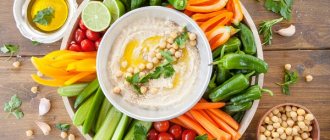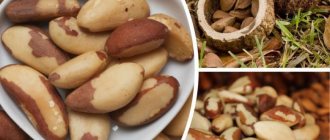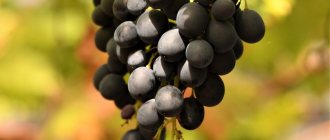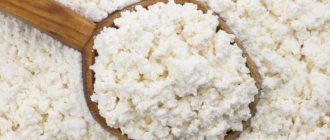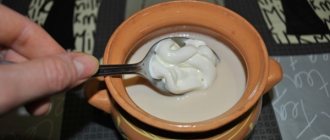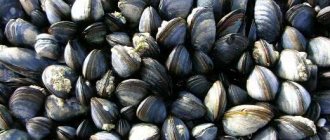Calorie content of roasted chestnuts per 100 grams
Calorie content of roasted chestnut nuts per 100 grams is 245.6 kcal. A 100 gram serving contains:
- 3.22 g protein;
- 2.21 g fat;
- 53.4 g carbohydrates.
Roasted chestnuts are enriched with B vitamins (B1, B2, B5, B6, B9), PP, K, E, C, minerals copper, manganese, potassium, zinc, iron, phosphorus, selenium, sodium.
Due to their high calorie content, fat content, and saturation with carbohydrates, fried chestnuts should be avoided if you are overweight or have exacerbations of gastrointestinal and liver diseases.
The benefits of chestnuts
The benefits of edible chestnuts are as follows:
- the product is saturated with a large amount of vegetable protein, which is necessary to maintain protein balance during vegetarianism and a meat-free diet;
- chestnut decoctions are used to treat hemorrhoids, lung diseases, and are indicated for thrombophlebitis and blood flow disorders;
- a few pieces of roasted and boiled chestnut restores energy balance during heavy physical and mental stress;
- chestnut is saturated with healthy fats, which have a beneficial effect on metabolism, the condition of nails, hair, skin, and the skeletal system;
- doctors recommend eating chestnuts to prevent mastopathy and mastitis;
- chestnut sprays are used to treat cellulite;
- infusions based on chestnuts have a pronounced diuretic effect and prevent edema;
- Medicines with tannins from the fruit are effective for treating burns and wounds.
Harm of chestnuts
You should avoid eating edible chestnuts if:
- allergic reactions and individual intolerance to the product;
- renal failure;
- during breastfeeding and pregnancy;
- for diabetes mellitus, gastric and intestinal ulcers;
- with a tendency to flatulence.
Keep in mind that only special edible chestnuts can be eaten. Horse chestnut is poisonous and its consumption can lead to severe food poisoning.
The Chinese consume more than 50% of the world's chestnut harvest, the French celebrate a real chestnut festival and fry the fruits, going out to the central squares, in huge frying pans.
Chestnuts are not grown in Russia, so this European treat can only be found in supermarkets.
There are 2 varieties of chestnuts:
1) Horse chestnut is poisonous , unsuitable for food, but is actively used in medicine and cosmetology.
2) Noble (“real”) - its fruits are edible.
We will talk about the fruits of the edible chestnut. How beneficial and what harm can they cause to our health?
Edible chestnut: what are the benefits for the body?
A useful property of chestnut for vegetarians is its high content of vegetable protein. Therefore, it will serve as an excellent substitute for animal protein in the human body.
Chestnut is a medicine! Not only chestnut fruits, but also bark, leaves and buds bring benefits to human health. Chestnut decoction is perfect for diseases of the upper respiratory tract, for the treatment of hemorrhoids, thrombophlebitis and dilated veins of the nasopharynx. It increases vascular tone, reduces capillary fragility, and blood flow accelerates.
Chestnut decoction wonderfully refreshes the skin. It is enough to take two tablespoons of chopped chestnut and pour a glass of boiling water. Ready! We wipe our face every 2-3 days. After just a month, the skin ceases to be dry, inflammation and redness disappear, and fine wrinkles are eliminated.
Chestnut is an energy bar! Yes, yes, it’s hard to believe, but just 2-3 chestnuts for dinner saturate our body, and there will be no feeling of hunger. The ideal option is to kill the worm and curb the appetite that wakes up at night. Chestnut also helps get rid of malaise and fatigue.
There is an interesting fact that direct contact with chestnut can charge you with vigor, strength and good mood. Go to Southern France, Spain or Italy, where chestnuts are grown, and be sure to check the veracity of the statement.
Chestnut is a diet helper! It contains a low amount of fat, so this product should definitely be added to the first one when preparing a vegetarian diet, because it promotes weight loss. It is almost impossible to gain weight even from eating a large number of chestnuts. Chestnut is also useful for athletes before and after training.
Chestnuts are a side dish for roast . The French consider chestnuts to be indispensable assistants in preparing their culinary masterpieces. Chestnuts are baked, boiled, fried until golden brown. Added to salads, porridges and even wine. When placed in the same container with meat, they give it an excellent aroma and unusual taste. Chestnut is a favorite product of kitchen masters. At the same time, chestnuts baked in the oven can be an independent dish.
Chestnut is the perfect dessert for ice cream! To prepare it you need only 4 ingredients: 500 g chestnuts, 80 ml cognac or wine, 3 tablespoons butter, 2 teaspoons sugar. Chestnut nuts are pre-cooked for 5 minutes in boiling water, then peeled and placed in a mold with butter and sugar. The form is sent to the oven and baked for 10-15 minutes at a temperature of 200 degrees. The cooked fruits should be sprinkled with cognac and served with ice cream.
Chestnut is a panacea for many diseases . Doctors often talk about the incredible healing energy of chestnuts, which not only act for preventive purposes, but also treat diseases such as mastitis and mastopathy. The fruits of this plant are also used in breast massage. However, you should not self-medicate; any therapy must be carried out under the supervision of a doctor.
In order to cope with cellulite, it is enough to make a simple chestnut scrub: mix olive oil, basil or other herbs, essential oil and the chestnut itself, previously ground.
It will provide health benefits to people with back pain. For radiculitis, it is enough to sleep on chestnuts . The body will receive a natural massage that will strengthen the nerve roots, and the pain will begin to subside. For sore joints, you can make a bracelet from dried chestnuts and wear it on your hands. There are enough 6-7 pieces in a bracelet.
Application
Chestnut fruits have an unusual taste due to the specific composition of the cotyledons. They are used in cooking as an independent dish or as a side dish. They are prepared by frying in a frying pan, which gives them a specific taste.
In some countries, chestnuts are pureed and added to soups. When making confectionery products, chestnut powder is added to flour.
In poultry and livestock farming, chestnut fruits are used as a food additive.
Market Analytics
- COVID-19 is changing the rules of the game in the cosmetics market
- Beauty of the future: cosmetic innovations 2020
- New ingredients are the driving force of the cosmetics industry
Convenient search for beauty salons on our website
Beauty salons in Moscow Beauty salons in St. Petersburg Beauty salons in Ekaterinburg Beauty salons in Novosibirsk
Latest blog posts on our website
- Naturecream / Geranium (Pelargonium) oil for skin health and beauty
- Prostye-sovety / Save on a beauty salon: procedures that can be done at home
- Naturecream / Growth Factor - brings back youth?
- Oksana-Lezina / 3 effective abdominal exercises from a fitness instructor for beginners
- Prostye-sovety / Making perfect curls at home
- Prostye-sovety / Which hair removal method to choose
- Naturecream / Wrinkles Puppets
- Naturecream / PEPHA-TIGHT - instant skin lifting
- Naturecream / Blue light - a danger to the skin
- Naturecream / Cocoa Butter – A treat for the skin
Latest forum topics on our website
- Mrs._Smith / Badly sunburned! What to do?((
- Ice / Is it necessary to combine fitness classes with a diet?
- Antonova / What can be used for hair loss?
- Radio operatorKat / Who was on a protein diet?
- Suzanna / Mesotherapy on the face
Other articles in this section
| Cashew Cashew occupies a special place in the world of gourmet nuts. It is the fruit of an evergreen tree that originally grew in South America and was eventually transported to Europe. The fruit of the cashew tree consists of two parts: the cashew apple and the nut itself. The nut ripens in a dark, hard shell on top of a juicy, bright apple. The nut shell itself can be dangerous to human skin; contact with it can cause burns and blisters, so cashew nuts are carefully removed from the shell before being sold. They are then thermally treated until the oil completely disappears. |
| Sun-dried cherries Cherries are one of the most popular stone fruit crops growing in central Europe. To date, more than 200 varieties of domestic and foreign selection have been bred. Cherry berries are small in size, bright red in color and have a pleasant sweet and sour taste. |
| Dried kumquat Kumquat is a tropical fruit of the citrus family, oblong in shape, bright yellow in color, the size of which does not exceed the size of a walnut. This fruit is also known as fortunella or kincan. In appearance it resembles a small oval-shaped orange. Fruit length – 3-5 cm, width – 2-4 cm. |
| Dates The date palm has small fruits - these are dates. These fruits are very popular on the planet and are consumed by humans in the form of dried fruits. Only certain types of dates are used in the food industry. |
| Banana Chips Banana chips are thin slices of dried or fried banana and coated in sweet syrup. They are crispy, tasty and very healthy. |
| Dried apples Dried apple is one of the most famous and consumed fruits in the world. The well-known Phoenicians grew this fruit and revered it with special passion. Dried apple ranks first among fruits in terms of the amount of vitamins it contains. For proper drying, it is recommended, first of all, to use a ripe apple with sufficiently dense pulp. |
| Dried mango It is probably impossible to find a person who does not know about mangoes. This product tastes great and can be purchased at almost any store. |
| Coconut Where the first coconut tree grew remains a mystery. This is an amazing tree, the only plant that can survive on sea water. And the fruit of a palm tree can give rise to a new tree by making a long sea voyage. |
| Sweet almonds Almonds are small fruits of the almond tree. This type of plant is widespread in Central Asia and the Middle East. Humanity has been familiar with almonds for a long time. There are even references to the product in biblical stories. Historians suggest that the birthplace of the product is China. During its rapid development, China traded with virtually the entire world, resulting in almonds becoming widely popular. |
| Candied papaya Papaya first came to the European continent in candied form (in the form of candied fruit) in the 16th century. This exotic fruit has been cultivated by the Indians of Central America and Mexico since ancient times. They valued papaya very much for its medicinal properties and rapid growth. After the discovery of America, Europeans also learned about papaya. Due to the resemblance of papaya fruits to melon, they dubbed it the “melon tree.” Another name for papaya is “breadfruit”, as the fruit smells like fresh bread when baked. Appreciating the beneficial properties of this exotic plant, Europeans began attempts to cultivate it in southern Europe and Africa. Thanks to her unpretentiousness, she took root there perfectly. In Russia, attempts have recently begun to grow papaya in the south of the country; now there are trial plantings there. |
Edible chestnut: what is harmful to health?
When introducing chestnuts into your diet, be sure to consult a specialist so as not to harm your health. Since chestnut fruits have a large number of contraindications. If in doubt, it is better to discard the product so as not to harm your body.
Chestnut is not recommended for use if:
• Pregnancy and lactation
• Menstrual irregularities
As with everything, you need to observe moderation when eating chestnuts. Excessive consumption can lead to cramps and problems with the digestive system: constipation, heaviness in the stomach, nausea and bloating.
Be careful when buying chestnuts . After all, there is a second type of it: horse chestnut . Being poisonous, it should not be eaten. Outwardly, it is very difficult to distinguish them, but there is one little clue: the edible chestnut has a pointed end, which contains the cotyledon. Eating a poisonous chestnut can cause poisoning, so purchase chestnuts only from trusted stores, carefully studying the packaging.
Eating chestnuts can harm people suffering from cardiovascular diseases. Due to the high content of carbohydrates and starch in them (almost 60%), the load on the heart and blood vessels increases.
Chestnut reduces blood pressure. Therefore, hypotensive patients should refrain from using it.
People prone to obesity are advised to limit their consumption of chestnuts due to their high starch content.
Chestnut is a difficult food to digest. Poorly roasted fruits can harm the intestines and cause diarrhea. Therefore, people suffering from diseases of the gastrointestinal tract should not eat chestnuts in any form.
A chestnut-based scrub can dry out the skin, so it is important not to overdo it and avoid lotions and creams that are harsh on the skin before applying the scrub.
Useful properties and calorie content of chestnuts: valuable information for fans
Current research confirms the fact that the chestnut tree began to be cultivated as early as the 5th century BC in Ancient Greece, since the plant is amazing in its chemical composition, taste and healing properties. The fruits were not only eaten, but also used as medicine. This article will reveal the main secrets of beneficial qualities, and from it readers will learn the calorie content of chestnuts.
Not everyone knows, but this fruit is a type of nut. The product is very popular in cooking; it produces sophisticated and delicious dishes. The piquant taste of the fruit can be used as a seasoning for meat delicacies. In addition, chestnuts can be consumed boiled, stewed and fried. Nutritionists recommend them to people who want to lose excess weight: the calorie content of chestnuts is low, but their nutritional value is high. You won’t be able to eat a lot of them, because the body quickly saturates for a long period of time.
The sweet treat also contains a lot of folic acid, potassium and water. All these properties only confirm how healthy chestnuts are. The calorie content of boiled fruits is no more than 170 kcal per 100 g. The fat composition is similar to cereal muesli - the products have a minimal fat content, unlike other nuts and dried fruits. The composition of edible fruits is rich in retinol (vitamin A), vitamin B, C, fiber, minerals and starch. They contain a lot of carbohydrates - 62%.
It is not for nothing that these fruits are so widespread and popular in Europe. They are soaked in wine, preserved in syrup, boiled, baked and fried. The fruits are also used to make purees, which are eaten with bread, ground with sugar, and amazing desserts are prepared with egg whites. Of course, if you are on a diet, it is better to consume boiled rather than roasted chestnuts. The calorie content of fried ones is higher and is about 200 kcal.
Here are some of the simplest and most delicious recipes for gourmets and connoisseurs of this type of nut:
- Cut a small piece of shell (so that the crust does not crack) from the fruit and put it in the oven for 15 minutes. Remove the baked nuts from the shell and serve with a piece of butter.
- The classic cooking recipe: first, you need to hold them in boiling water for a few minutes to remove the bitterness, then peel off the film, put them in water and boil for no more than 30 minutes. Use a fork to check their readiness; when the peel becomes soft, you can remove them.
- The original sauce for meat dishes is prepared in the following way: pre-washed and peeled chestnuts are boiled in broth until softened. Then beat them with a blender, add cream, butter and, if desired, nutmeg. Serve with rabbit, chicken or duck. The incomparable sauce has a piquant taste and adds zest to any dish.
The calorie content of chestnuts prepared using the above methods is low.
But it is used not only in cooking; the product is also widely used in folk medicine. Its medicinal properties are unique. To treat various diseases, healing decoctions, infusions and ointments are made from all parts of the plant. For example, alcohol extracts based on these nuts help relieve swelling and inflammation. They strengthen blood vessels, thin the blood, reduce bad cholesterol and have a mild analgesic effect. It should be noted that even official medicine has recognized the healing power of this plant. As we can see, the calorie content of chestnuts is small, but they bring enormous benefits to the body.
But we must not forget about contraindications. It is not recommended for diabetics, people suffering from gastritis, constipation, kidney disease, liver disease, and thrombocytopenia. The products should not be given to small children as they are highly allergenic. For the same reason, it is necessary to limit the consumption of chestnut honey.
Edible chestnut for children: good or bad
Is it possible to give chestnuts to children? And in what form?
Unfortunately, there are no official recommendations regarding the introduction of chestnuts into the diet of children. Whether it will be beneficial or harmful is not entirely known. However, experts are inclined to believe that a child’s stomach is able to accept this kind of food only from the age of 4-5 years. Being a difficult product to digest, chestnuts are poorly digestible and harm the baby’s digestive tract. Problems with the liver, kidneys and pancreas may occur. It is best to prepare a homogeneous mass for children from pre-boiled chestnuts and add, for example, to mashed potatoes or soups. Chestnuts can cause bloating and constipation in your baby, so be sure to consult your pediatrician to avoid harm to the growing body.
How to use chestnut in cosmetology
The female part of the Russian population and residents of European countries use edible nuts in home cosmetology.
The benefits of using edible chestnut for preparing external cosmetics are hard to miss. It is recommended to add its pharmaceutical extracts or flour to the product.
Extracts of edible fruits are added to creams and face masks, hair shampoos, hand balms, bath foams, and anti-cellulite products.
The properties of edible chestnut to relieve inflammation and irritation of the skin, improve color, cleanse, and rejuvenate are used in face masks.
To relieve inflammation, reduce the fragility of capillary vessels and normalize the functioning of the sebaceous glands, prepare a chestnut-honey mask that is suitable for all skin types.
Shampoos containing healthy edible chestnut restore the structure of the hair, making it strong and strong.
With the help of body lotions, the effect of enhancing microcirculation in the skin, toning the skin, smoothing, lifting, and getting rid of the “orange peel” is obtained.
Bath foams have good relaxing properties and the ability to soften the skin.
Tannins have properties that are indispensable in cosmetology. Compounds of substances, flavonoids and essential oils in a complex:
- saturate the skin with oxygen;
- contribute to the restoration of the upper layer of the epidermis;
- act as a filler: fill facial wrinkles and smooth them out.
Due to the property of edible chestnut to neutralize the damage of ultraviolet rays, it is added to tanning products.
Using tree oil, you can take care of aging and dry skin. And the ability of foot cream with edible chestnut to relieve swelling and fatigue is used in the prevention of varicose veins.
Stagnation of blood harms the body; this mechanism provokes the formation of cellulite and reduces the overall tone of the skin. Peeling from edible chestnut prevents stagnation of blood flow and activates hematopoietic processes.
This is interesting: How to make a Cancer man fall in love with you

